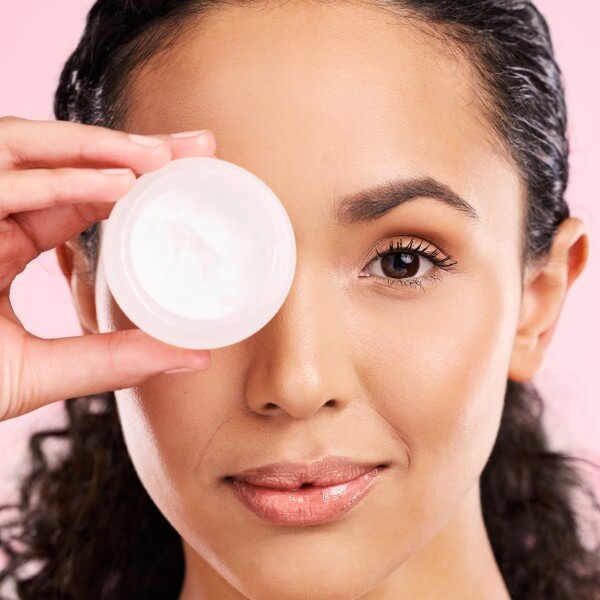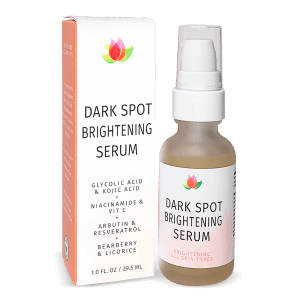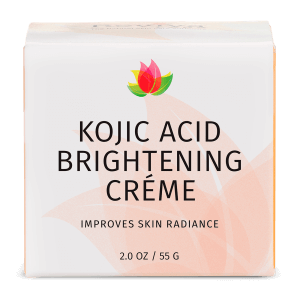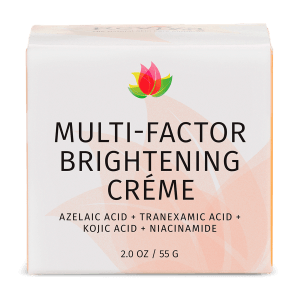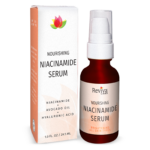Ingredients, Reviva Labs, Skin Care
What is Tranexamic Acid and How Does It Help Hyperpigmentation?
Skin discoloration can feel like an uphill battle, especially when dealing with stubborn hyperpigmentation. The market is flooded with ingredients that claim to lighten dark spots, but few have demonstrated as much promise as tranexamic acid. While it may not be as widely known as vitamin C or retinol, this ingredient is becoming a game changer in treating hyperpigmentation safely and effectively.
Understanding Tranexamic Acid
Tranexamic acid is a synthetic derivative of lysine, an essential amino acid involved in various biological processes. Initially used as an oral medication to reduce excessive bleeding in surgeries and medical conditions, researchers discovered its surprising effects on pigmentation when patients reported a brightening of their complexions. This discovery led to its integration into topical skincare formulations designed to tackle dark spots, melasma, and post-inflammatory hyperpigmentation (PIH).
Unlike other skin-brightening ingredients that focus solely on exfoliation or melanin suppression, tranexamic acid works by addressing the root cause of pigmentation at a deeper level. It disrupts the interaction between melanocytes (pigment-producing cells) and keratinocytes (skin cells), thereby reducing the chain reaction that leads to dark spots.
How Hyperpigmentation Develops
To understand how tranexamic acid combats hyperpigmentation, it helps to break down the process of pigmentation itself. When skin experiences trauma—whether from sun exposure, inflammation, acne, or hormonal fluctuations—the body triggers an immune response that results in excess melanin production. This protective mechanism, while beneficial for guarding against UV damage, often results in uneven pigmentation.
Melasma, one of the most challenging types of hyperpigmentation, is influenced by hormonal fluctuations and sun exposure. Similarly, PIH occurs when the skin responds to injury (such as acne, burns, or cuts) by producing excess melanin. Over time, these darkened areas can persist, making the skin appear blotchy or uneven.
How Tranexamic Acid Helps Fade Hyperpigmentation
1. Inhibits Melanin Transfer
The most distinctive function of tranexamic acid in skincare is its ability to block the transfer of melanin from melanocytes to keratinocytes. By reducing this process, it prevents dark patches from becoming more prominent and helps even out existing discoloration.
2. Reduces Vascularity in Pigmented Areas
Hyperpigmentation often coincides with an increase in vascular activity, particularly in cases of melasma. Tranexamic acid works by decreasing the formation of new blood vessels in the affected areas, which in turn limits inflammation and melanin production.
3. Calms Inflammation
Inflammation plays a key role in hyperpigmentation, as seen in PIH. Tranexamic acid has anti-inflammatory properties that soothe irritated skin, reducing the likelihood of post-inflammatory dark spots forming after acne breakouts or other skin traumas.
4. Works Synergistically with Other Brightening Ingredients
Tranexamic acid is highly compatible with other brightening agents like vitamin C, niacinamide, kojic acid, and azelaic acid. When combined, these ingredients enhance each other’s effects, delivering more significant skin-brightening results without excessive irritation.
Clinical Evidence Supporting Tranexamic Acid for Hyperpigmentation
Several studies have demonstrated the effectiveness of tranexamic acid in treating melasma and other forms of hyperpigmentation. In one clinical trial, patients with melasma saw a significant reduction in pigmentation after applying tranexamic acid topically for 12 weeks. The results were comparable to hydroquinone, a traditional skin-lightening agent, but without the associated irritation and long-term side effects.
A separate study found that when used in conjunction with vitamin C and niacinamide, tranexamic acid delivered even faster and more visible improvements in skin tone. Its ability to inhibit melanin synthesis while also reducing inflammation makes it particularly beneficial for sensitive skin types that cannot tolerate more aggressive treatments like hydroquinone or retinoids.

How to Incorporate Tranexamic Acid into Your Skincare Routine
1. Choose the Right Formulation
Tranexamic acid is available in multiple skincare formulations, including serums, creams, and masks. When selecting a product, look for concentrations between 2-5% for optimal effectiveness.
2. Use It in the Morning and Evening
For best results, apply tranexamic acid twice daily—once in the morning and once at night. It pairs well with hydrating serums and antioxidant treatments, making it a versatile addition to a well-rounded skincare routine.
3. Pair It with Sunscreen
Hyperpigmentation worsens with sun exposure, so sunscreen is non-negotiable when using tranexamic acid. A broad-spectrum SPF 30 or higher will protect the skin and prevent the recurrence of dark spots.
4. Combine It with Other Targeted Treatments
Tranexamic acid plays well with ingredients like niacinamide, vitamin C, and kojic acid. However, if using stronger exfoliants like glycolic acid or retinol, it’s best to alternate usage to avoid irritation.
Who Should Use Tranexamic Acid?
Ideal Candidates:
- Those struggling with melasma or hormone-induced pigmentation
- Individuals dealing with PIH from acne scars
- Those looking for a gentler alternative to hydroquinone
- Sensitive skin types that react to harsh exfoliants or retinoids
Who Should Avoid It?
While tranexamic acid is well-tolerated by most skin types, those with extremely sensitive or compromised skin should introduce it gradually. If you have a history of allergies to lysine derivatives, consult a dermatologist before incorporating it into your routine.
How Tranexamic Acid Compares to Other Brightening Agents
| Ingredient | Main Function | Best For | Irritation Risk |
| Tranexamic Acid | Inhibits melanin transfer and reduces inflammation | Melasma, PIH, general discoloration | Low |
| Vitamin C | Antioxidant that brightens skin and protects from UV damage | Dull skin, uneven tone | Moderate |
| Niacinamide | Reduces redness, oil production, and uneven tone | Sensitive skin, redness-prone | Low |
| Kojic Acid | Inhibits tyrosinase, a key enzyme in melanin production | Stubborn dark spots | High (can cause irritation) |
| Azelaic Acid | Anti-inflammatory, helps with acne and pigmentation | Acne-prone, sensitive skin | Low to moderate |
The Future of Tranexamic Acid in Skincare
With its proven efficacy and minimal irritation risk, tranexamic acid is gaining traction as a staple ingredient in hyperpigmentation treatments. More brands are formulating products with this powerhouse ingredient, recognizing its ability to deliver visible results without the drawbacks of traditional brightening agents.
Advancements in delivery systems, such as encapsulated formulations, are also enhancing its penetration and efficacy. Additionally, dermatologists are exploring combinations of tranexamic acid with peptides and growth factors to further refine its role in skincare.
Reviva Labs’ Approach to Hyperpigmentation
For those looking for effective solutions to hyperpigmentation, Reviva Labs offers expertly crafted formulations that combine tranexamic acid with other skin-enhancing ingredients. Our Multi-Factor Brightening Crème blends tranexamic acid with azelaic acid, kojic acid, and niacinamide to target dark spots while improving overall skin texture.
If hyperpigmentation is your primary concern, integrating targeted treatments with clinically backed ingredients can make all the difference. Whether it’s for melasma, acne scars, or general discoloration, tranexamic acid provides a gentle yet powerful way to achieve a brighter, more even complexion.

